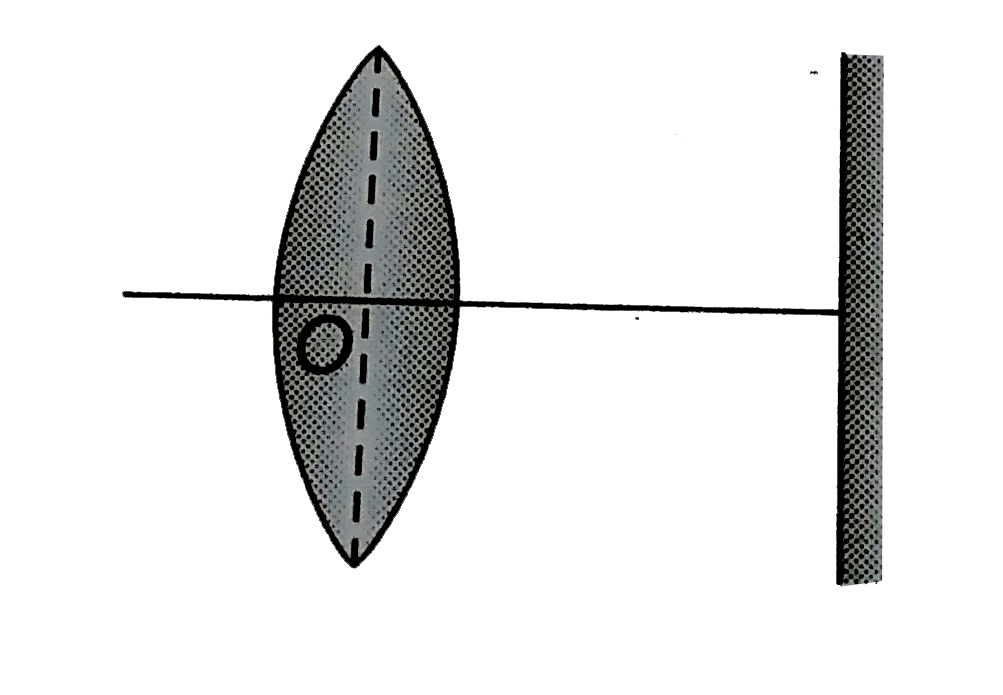In case of a simple magnifier of focal length 'f' what are the maximum and minimum distances of (a) object and (b) its image from the lens if least distance of distinct vision is D?
To solve the problem regarding the maximum and minimum distances of the object and its image from a simple magnifier lens of focal length f and the least distance of distinct vision D, we will use the lens formula and the concept of magnification.
1. Understanding the Lens Formula:
The lens formula is given by:
1v−1u=1f
where:
- v = image distance from the lens
- u = object distance from the lens
- f = focal length of the lens
2. Setting Up the Distances:
- The least distance of distinct vision D is the minimum distance at which the eye can see an object clearly. For a simple magnifier, the image is formed at this distance when the object is at the focal point of the lens.
- The maximum distance for the object is when the image is formed at infinity (the object is at the focal point).
3. Finding Maximum Object Distance:
When the image is at infinity (v→∞):
1v→0⟹1u=1f⟹u=f
Thus, the maximum distance of the object from the lens is:
umax=f
4. Finding Minimum Object Distance:
When the image is at the least distance of distinct vision D:
v=−D(negative because image is virtual)
Substituting in the lens formula:
1−D−1u=1f
Rearranging gives:
1u=1f+1D
Therefore:
umin=fDD+f
5. Finding the Corresponding Image Distances:
- For the maximum object distance umax=f:
v=∞(image at infinity)
- For the minimum object distance umin=fDD+f:
v=−D(image at least distance of distinct vision)
Summary of Distances:
- Maximum object distance umax=f and image distance v=∞.
- Minimum object distance umin=fDD+f and image distance v=−D.
The lens formula is given by:
1v−1u=1f
where:
- v = image distance from the lens
- u = object distance from the lens
- f = focal length of the lens
- The least distance of distinct vision D is the minimum distance at which the eye can see an object clearly. For a simple magnifier, the image is formed at this distance when the object is at the focal point of the lens.
- The maximum distance for the object is when the image is formed at infinity (the object is at the focal point).
When the image is at infinity (v→∞):
1v→0⟹1u=1f⟹u=f
Thus, the maximum distance of the object from the lens is:
umax=f
When the image is at the least distance of distinct vision D:
v=−D(negative because image is virtual)
Substituting in the lens formula:
1−D−1u=1f
Rearranging gives:
1u=1f+1D
Therefore:
umin=fDD+f
- For the maximum object distance umax=f:
v=∞(image at infinity)
- For the minimum object distance umin=fDD+f:
v=−D(image at least distance of distinct vision)
- Maximum object distance umax=f and image distance v=∞.
- Minimum object distance umin=fDD+f and image distance v=−D.
Similar Questions

The distance between a convex lens and a plane mirror is 10 cm. The parallel rays incident on the convex lens after reflection from the mirror forms image at the optical centre of the lens. Focal length of lens will be
View SolutionThe minimum distance between an object and its real image formed by a convex lens is
View SolutionA convex lens of a focal length 5 cm is used as a simple microscope. Where should an object be placed so that the image formed by it lies at the least distance of distinct vision (D = 25 cm) ?
View SolutionIn a compound microscope consisting of two convex lenses of focal lengths 1.5 cm and 10 cm, the object is 2 cm from the objective and the final image is formed at the least distance of distinct vision (D=25cm). Find the distance of separation of the two lenses.
View SolutionA convex lens of focal length 10 cm and imag formed by it, is at least distance of distinct vision then the magnifying power is
View SolutionThe two lenses of a compound microscope are of focal lengths 2 cm and 5 cm. If an object is placed at a distance of 2.1 cm from the objective of focal length 2 cm the final image forms at the final image forms at the least distance of distinct vision of a normal eye. Find the magnifying power of the microscope.
View SolutionThe minimum distance between a real object and its real image formed by a thin converging lens of focal length f is
View SolutionThe maximum magnification that can be obtained with a convex lens of focal length 2.5 cm is (the least distance of distinct vision is 25 cm )
View SolutionThe magnifying power of a simple microscope is 6. The focal length of its lens in metres will be, if least distance of distinct vision is 25cm
View SolutionThe minimum distance between an object and its real image formed by a thin convex lens of focal length f is K.f. Find the value of K.
View Solution
